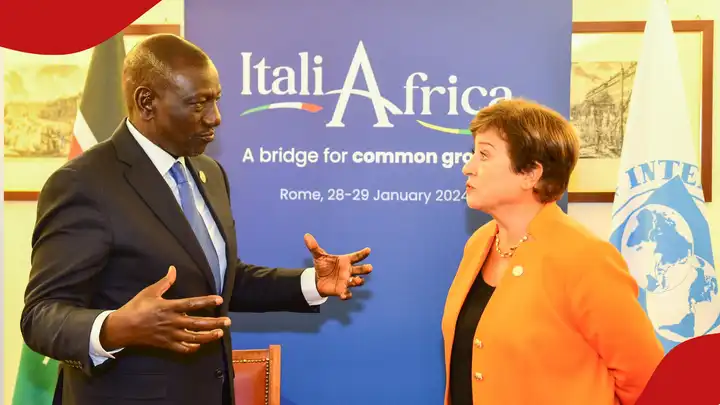The United States (US) dollar supply in the market decreased on Friday, November 14, causing the shilling to decline to its lowest level against the greenback in more than six months. President William Ruto (l) engages IMF MD Kristalina Georgieva. Photo: William Ruto. Source: Twitter This ended a five-month period in which the local currency remained unchanged at KSh129.23 to KSh129.26 per unit against the US dollar. What is the value of the Kenyan shilling against US dollar? The local currency traded at an average of KSh 129.35 on Friday, according to official data from the Central Bank of Kenya (CBK). By Monday, November 17, commercial banks reported that it had slightly depreciated to an average of KSh 129.38. The shilling has been trading in a narrow range between KSh 129.23 and KSh 129.24 since June 2025, before the marginal drop in the recent three trading sessions. On Tuesday, November 18, the CBK indicated that the shilling exchanged at 129.51 to the US dollar. What is the real value of the Kenyan shilling? Geopolitical economist Aly-Khan Satchu analysed the value of the shilling based on current global market trends.
The economist noted that the local currency is undervalued compared to its real value, noting that this was why the International Monetary Fund (IMF) questioned its long-term stability. “I have an equilibrium price for the Kenyan shilling about 5% higher than its current level. The IMF was implicitly arguing the Central Bank of Kenya was pursuing a weak shilling policy. The dollar has lost ground against key emerging and African currencies through 2025 and the shilling has been an outlier against this overarching trend which infers its price action has been inorganic,” Satchu told TUKO.co.ke in an exclusive interview. What did the IMF say about the Kenyan shilling? The IMF officials visited Nairobi in mid-October and held talks with President William Ruto, Treasury CS John Mbadi, Kenya Revenue Authority (KRA) chairman John Mbadi and other officials. The Kenyan shilling’s unchanged value in relation to the US dollar alarmed the policymakers.
They claimed that the shilling was too steady. According to Muriithi, the IMF was astounded by the shilling’s sustained stability. President William Ruto (c) with IMF officials at State House, Nairobi. Did Treasury manipulate the Kenyan shilling? TUKO.co.ke previously reported that Mbadi said the government would not allow the Kenyan shilling to appreciate relative to the US dollar. Speaking on Thursday, March 27, 2025, before the National Assembly’s Budget and Appropriations Committee, Mbadi pointed out that a strong shilling might deter exports, negatively impacting local manufacturers and exporters. He contended that a decline in exports could lead to a decline in foreign exchange reserves and make the country more vulnerable economically.
By Japhet Ruto


